Centre for Quantum Materials & Quantum Technologies
The Centre for Quantum Materials and Quantum Technologies (CQMQT) is a world-class facility at the University of Adelaide, within a well-established ecosystem of dedicated research infrastructure for quantum materials research.
Quantum materials make use of the extraordinary effects of quantum mechanics to give rise to exotic and often incredible properties. These unique properties can be exploited to deliver devices that have new capabilities in telecommunications, defence and medical sciences.
Our vision is to create new innovative quantum materials and technologies.
The CQMQT focuses on three primary themes: quantum sensing, quantum communications, and quantum photonics. Going beyond conventional technologies, we actively engage in the dynamic evolution of emerging technologies. By teaming up with field experts, innovative companies, and institutions, we are committed to pushing the boundaries of quantum technology.
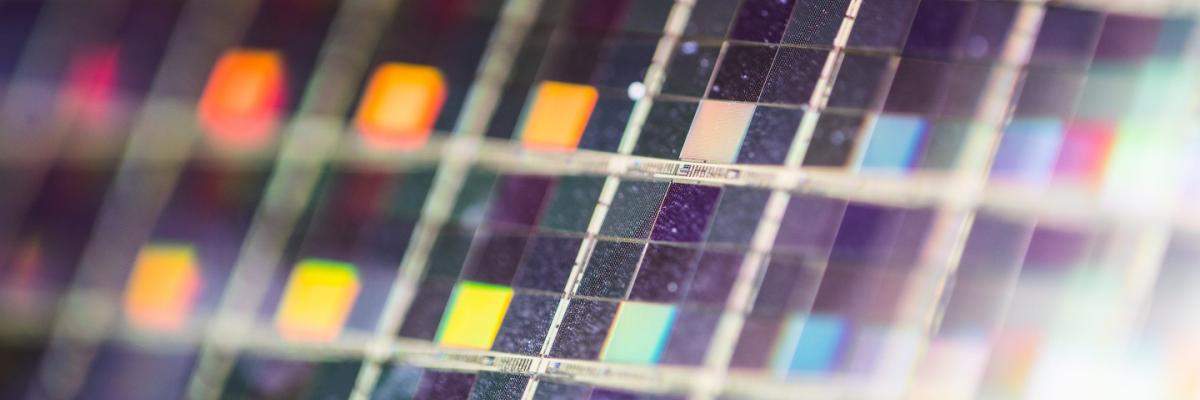
We are now on the cusp of a second quantum technology revolution, with the hope and expectation that research in quantum materials will deliver revolutionary technologies for next-generation communications, navigation, computing, cybersecurity and biomedicineProfessor Glenn Solomon, Chair of Quantum Materials, the University of Adelaide.
Centre Members
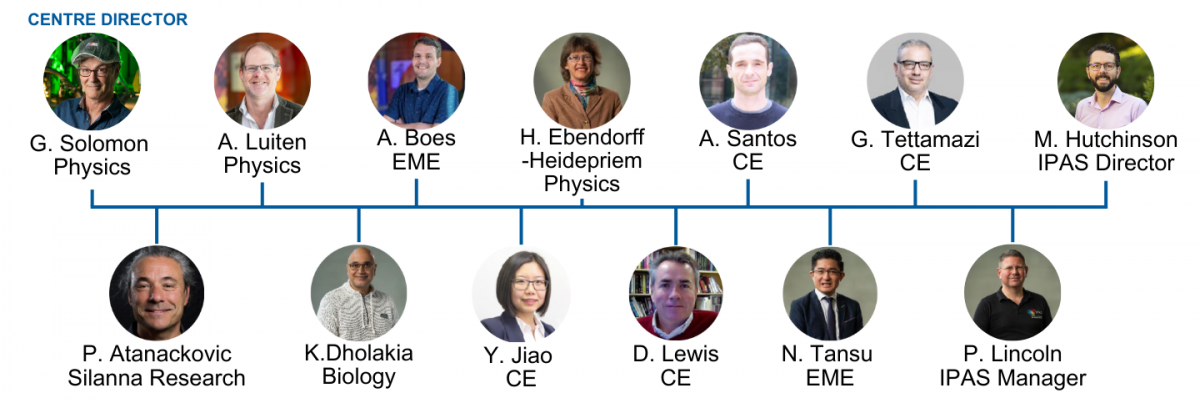
| Theme Title | Theme Lead |
|---|---|
| Defence & Communications (Lasers, Nanophotonics) | Prof Glenn Solomon* |
| Molecular Sensing using Lasers and LED | A/Prof Abel Santos |
| Innovative Fibre for Lasers and Sensing | Prof Heike Ebendorff Heidepriem |
| Integrated Photonics | A/Prof Andy Boes |
| GaN lasers and 5/6G Wireless / Satellite Comms | Prof Nelson Tansu* |
| Organic/Inorganic Solar Cells | Prof David Lewis |
| DFT modelling of materials and devices | A/Prof Yan Jiao |
| Superconducting Quantum Sensors | |
| Quantum Sensing | Prof Andre Luiten* |
| Wide bandgap semiconductor devices | Silanna CEO Petar Atanackovic |
| Institute for Photonics and Advanced Sensing Director | Prof Mark Hutchinson |
| Institute for Photonics and Advanced Sensing Manager | Mr Piers Lincoln |
*Partners in Quantum Australia, bringing together the Australian quantum sector.
-
Meet Professor Glenn Solomon - Centre Director
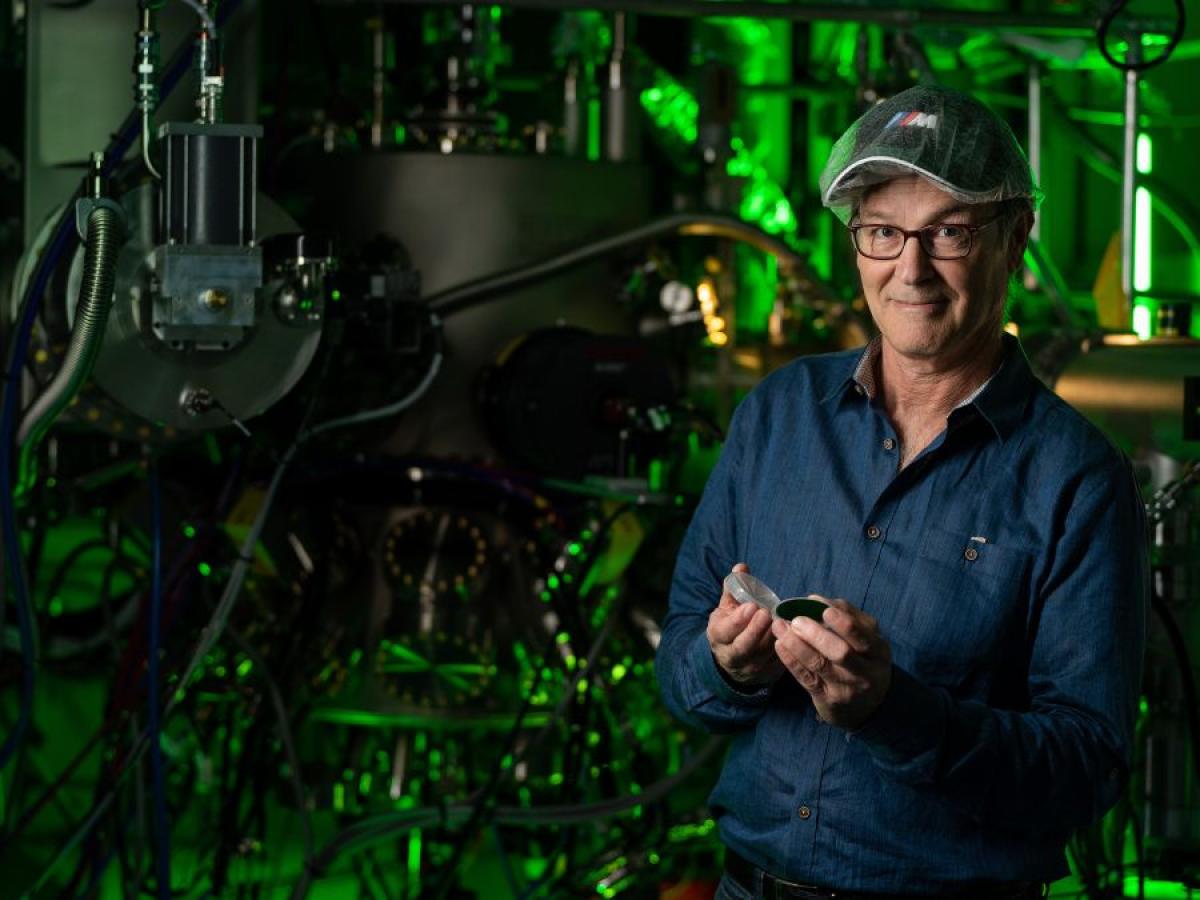
Professor Glenn Solomon
The University of Adelaide’s Chair of Quantum Materials, Professor Glenn Solomon is an esteemed scientist whose research combines quantum optics techniques and semiconductor crystal growth and processing. He is one of few scientists in the world who has fabricated nanostructures of quantum dots and performed quantum optics experiments on devices made from them.
Professor Solomon is a founding fellow of the Joint Quantum Institute (JQI), the hybrid institute of the US National Institute of Standards and Technology (one of the USA’s oldest and most prestigious physical science laboratories) and the University of Maryland College Park, focused on a unified study of quantum coherence across atomic, molecular and optical physics, and solid-state physics.
Professor Solomon has contributed major advances in the field of quantum materials, changing fundamental paradigms and playing a pivotal role in advancing our understanding of the interaction of light with semiconductor materials and device structures. His research has led to numerous world-firsts. More recently, he has developed protocols for standards-independent verification, showing the first demonstration of indistinguishable single photons from two separate quantum dot samples, an effect required from many quantum communications protocols, integrating quantum dot sources with waveguides for efficient device scaling and system integration.
With over 17,137 citations, Professor Solomon’s prolific body of work has not only had an exceptional impact on Quantum Materials but has also generated 16 patents and seen him establish CBL Technologies Inc., a start-up company based in California.Recognitions:
- Hicks Chair of Quantum Materials, University of Adelaide (2021)
- Fellow of both the Optical Society (2018)
- Fulbright Scholarship (2015)
- US Department of Commerce Bronze Medal for the development of quantum materials (2012)
- Fellow of the American Physical Society (2007)
- IBM Faculty Partnership Award (2001)
Prof. Solomon, completed an $1.6 million quantum optics lab in 2023, and work has begun on a $5.7M quantum materials and device fabrication lab due for completion in 2024.
Professor Solomon has access to world-class facilities at the University of Adelaide, within a >$30M ecosystem of dedicated research infrastructure for quantum materials research. This includes the Optofab Adelaide node of the Australian National Fabrication Facility (ANFF), Adelaide Microscopy, and the combined expertise, technology, and networks of the Institute for Photonics and Advanced Sensing (IPAS) headquartered at The Braggs (a $96M facility), which houses state-of-the-art advanced manufacturing capabilities.
-
Quantum Australia
We are proud to be a key partner in the newly established Quantum Australia, an initiative spearheaded by the University of Sydney and funded by an $18.3 million federal grant.
This centre is set to revolutionise the quantum technology landscape, driving innovation and economic growth in Australia.
Leading the University of Adelaide team are three distinguished professors:
- Professor Glenn Solomon, Director of the Centre for Quantum Materials & Quantum Technologies, focuses on the intersection of condensed matter physics and quantum optics.
- Professor Andre Luiten, a renowned expert in quantum sensing, serves as IPAS' Chief Innovator and a successful entrepreneur.
- Professor Nelson Tansu, Head of the School of Electrical and Mechanical Engineering, is a distinguished professor in quantum electronics.
Quantum research holds immense potential for groundbreaking technologies with profound economic and strategic implications. The establishment of Quantum Australia aims to foster strategic relationships across industry, research, and government to drive the commercialisation of quantum technologies. This initiative is expected to generate billions of dollars in economic value and create thousands of jobs by 2030 while supporting Australia’s national security objectives.
-
Infrastructure
The University of Adelaide offers cutting-edge semiconductor infrastructure, boasting unique MBE Semiconductor crystal growth capacity, comprehensive cleanroom fabrication facilities, and expertise in material, electrical, and optical characterisation.
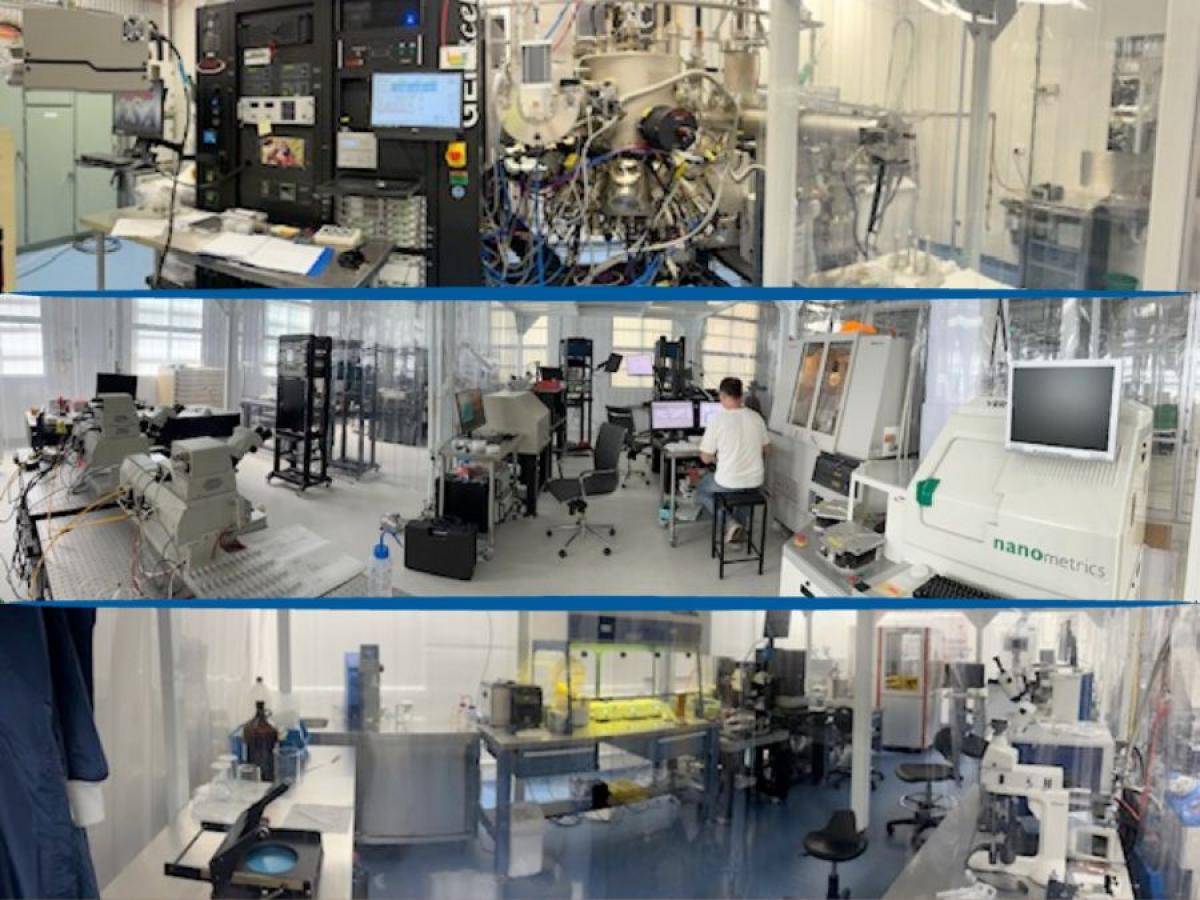
MBE semiconductor crystal growth capacity - One of the world's largest and most modern university initiatives.
- Including Silanna’s effort: 4 nitride and oxide-related semiconductor systems
- 1 Physics III-V (arsenide) system.
- 2 additional systems coming in February to Physics, 1 additional in Chem. Eng.
- Physics Crystal Growth lab will be 140 m2 in March 2024.
Cleanroom Fabrication
Semiconductor Class 100, 1000, and 10,000 cleanroom space outfitted for wet processing and 10 nm resolution lithography.
Materials characterisation
4 crystal X-ray diffraction, atomic-force microscopy.Electrical and optical characterisation
Variable to 4K Hall measurements, variable-temperature CV measurements, etching CV measurements. -
What Are Quantum Materials and Technologies?
Quantum Materials is an exciting field at the boundary of condensed matter and quantum physics, material sciences, and a variety of engineering disciplines around optoelectronics and photonics. Researchers in quantum materials harness quantum mechanics to develop new or improved states of material leading to innovative devices and systems, with the goal of furthering our understanding of nature and creating new or improved technologies.
While all materials exhibit quantum mechanical properties at some level, ‘quantum materials’ exhibit anomalously strong and unique properties such as quantum entanglement, quantum coherence, and topological behaviour. These strange properties can be exploited to deliver devices that have new capability in telecommunications, defence and medical sciences. Creating new materials and devices that will disrupt the global markets for:
- Deep UV-C for food, water, and air sterilisation
- Digital power electronics for electric vehicles and power grids
- High energy radio-frequency electronics for Radar applications
- Directed energy laser systems for defence
- Quantum precision timing for navigation
- Quantum neurology for nerve fibre repair
- Development of new materials for quantum simulation and computation
- Enabling technologies for secure communications such as novel quantum-limited light sources and detectors, and secure communications
-
Foci
- Accelerated Material Discovery, including semiconductors, superconductors and aterials, nanoparticle doped optical glasses
- Ultrawide bandgap UV Photonics – Emitters, Detectors, and Modulators
- Ultrawide bandgap power electronics – Power Amplifiers, Transistors, Power Diodes
- Integrated quantum photonics, single photon sources, nanoscale solid-state spin qubit, modulators and detectors
- High-power, high-temperature, mechanical wearresistant, and ultra lightweight devices and sensors
- Integrated technologies for biological processes, food sciences, and agriculture
-
Tackling Grand Challenges
Research on Quantum Materials brings together scientists working on Grand Challenges at the frontiers of physics, materials science and engineering.
- Health: Quantum materials offer the potential to deliver tools that will enhance health for all through creation of new sensors for personalised and preventative biomedical diagnostic health services.
- Future Industries: Quantum materials will be at the central core of Australia’s future industries and jobs.
- Sustainable Energy and Resources: Quantum materials are the building block of new electronics and photonics with ultra-high efficiency, and high energy storage leading to more efficient power networks with lower emissions.
- Secure Australia: Quantum materials offer new potential for surveillance and reconnaissance, bio-security sensors, enhanced navigation and enhanced cyber-security that will safeguard Australia from risks.
-
Pioneering Careers in Tomorrow's Industries
Education and training will be a key component of the Quantum Materials ecosystem at the University of Adelaide.
There is currently a dearth of suitably trained scientists and engineers in the field which will become even more serious as the field matures. Interaction between the future leaders of the field and industry will be an attractant for partners in the Quantum Materials future at Adelaide.
The new Masters in Quantum Materials and Technology delivered by the Schools of Physical Sciences and Electrical and Electronic Engineering will provide a state-of-the-art education in the field including access to new MBE material growth, device fabrication, advanced computational and modeling, and device and quantum measurement facilities. It is a unique opportunity, unprecedented in Australia. Components of these courses will be repackaged for micro-credentialing to offer opportunities for the professional development of industry and defence personnel.
-
Why Adelaide?
The University of Adelaide has created a world-leading ecosystem of people, facilities and partnerships in Quantum Materials.
This builds on the historic underpinning strengths at Adelaide in Physics, Engineering and Material Sciences. Through a focussed co-investment and collaboration strategy with Industry, Defence and Government, we have created the foundations required to build a billion-dollar Quantum Materials industry in South Australia.
Existing Areas of Research Excellence* > $30M of Dedicated Research Infrastructure & $10M of ongoing projects Key Partners - Atomic and Molecular Physics
- Optical Physics
- Chemical Engineering
- Electrical and Electronic Engineering
*Rated 5 out of 5, “well above word standard’ in the 2018 Australian Research Council Excellence in Research for Australia assessment$30M of Dedicated Research Infrastructure & $10M of ongoing projects"> - Molecular-beam epitaxy (MBE) - 5 chambers (4x2” and 1x6”)
- Anechoic chamber and THz-RF
- Cryogenics
- Lithography
- The Silanna Group: Australia’s only semiconductor design and manufacturing company.
- The Defence Science and Technology Group (DSTG): Embedded in the University of Adelaide North Terrace Campus with $3M of facilities. South Australia is home to centres of critical mass in high-power lasers.
- Australian Department of Defence
- Northrop Grumman: A leading provider and integrator of autonomous, C4ISR, cyber,logistics and strike systems and solutions.
- BAE Systems: Australia’s most versatile defence and security company.
- Electro Optic Systems: A leading ASX-listed Australian owned Defence and Space company.
- The Commonwealth Scientific and Industrial Research Organisation
- Australian Research Council
- South Australian State Government
-
A Unique Ecosystem
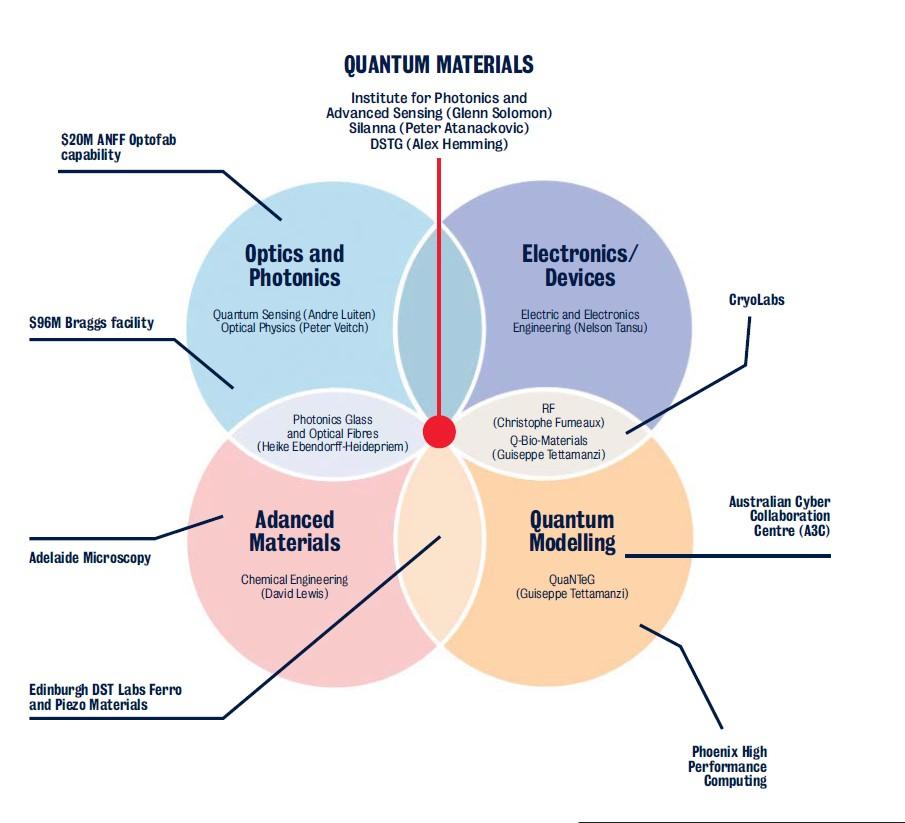
Researchers are drawn to South Australia to access the specialised technical facilities based in Adelaide, and quantum solutions possible in leading industries like defence, space, health and mining. Working within this ecosystem enables the development, testing and improvement of capabilities in quantum technologies.
The state is home to one of the world’s leading AI, machine learning, computer vision and deep learning capabilities – the Australian Institute for Machine Learning (AIML). AIML, ranked in the top six in the world for computer vision, is Australia’s largest AI capability with more than 160 researchers and engineers. Alongside AIML at The University of Adelaide is the Institute for Photonics and Advanced Sensing (IPAS) and Quantum Materials, chaired by Professor Glenn Solomon.
Adelaide’s size and the proximity of our innovation precincts and educational facilities provide a nimble environment enabling collaboration and the ability to turn pilots into products and attract investment. South Australia is committed to the industrial application of quantum and has established the Quantum and Data Hub SA and the Quantum and Data Activation Program SA to bring South Australian-based companies, universities, government agencies and industry bodies. -
Silanna

The University of Adelaide has partnered with global technology powerhouse Silanna Group and the South Australian Government to set up “picoFAB” and “Q FAB” at the University.
These advanced laboratories allow the designing and engineering of new semiconductor materials at the level of individual atoms.
The Silanna Group was founded in 2006 and is Australia’s only semiconductor design and manufacturing company. With its head office in Brisbane and additional operational, manufacturing and design centres in Sydney, USA, UK and Singapore, Silanna supplies high-technology microelectronic chips to the global communications, space, defence and medical markets. The company’s silicon-on-sapphire radio-frequency antenna switch, for example, is used extensively in smartphones and space satellites, as well as in NASA’s Mars rovers.
Located at the University of Adelaide’s North Terrace campus, the picoFAB has been collaboratively designed by Silanna and the University of Adelaide, and brings world-leading capability to South Australia, not least to the Quantum-materials, sensing and communication research at IPAS, enabling precise engineering of new semiconducting crystal structures for use in the commercialisation of new and innovative semiconductor devices.
With over $25m in new facilities, Silanna is currently leading the development of the next (4th) Generation Gallium Oxide Semiconductor materials in Adelaide, which opens up the deep UV to the mid-IR spectrum.
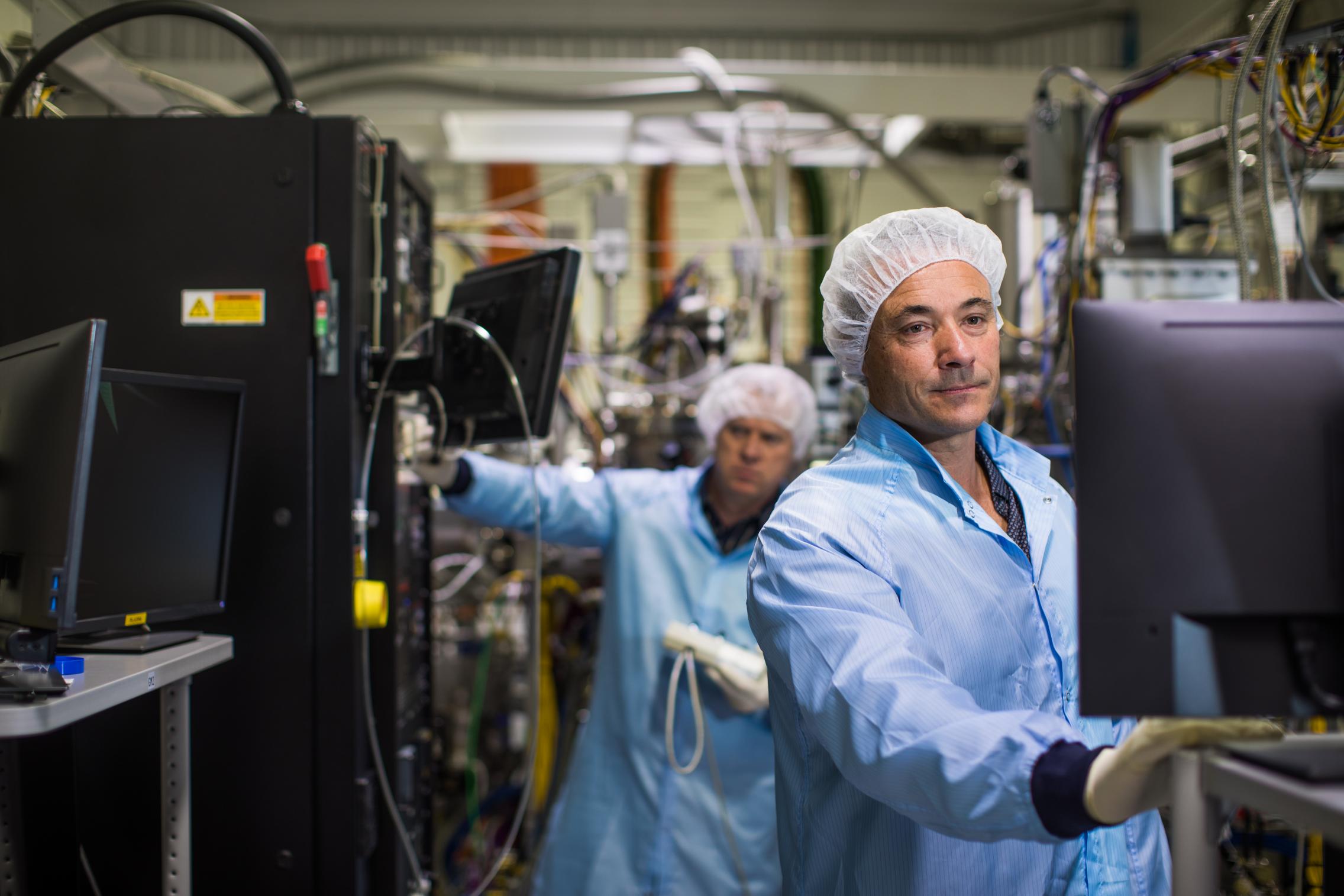
-
The University of Adelaide - a Trusted Defence Partner
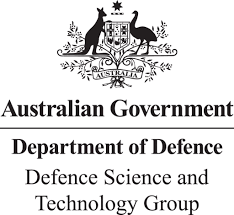
The University of Adelaide has a long and proud history of partnering with Australia’s defence sector.
Our involvement has ranged from co-developing Australia’s first satellite and rocket-launch capability with Defence in the 1960s to working with Defence and industry on game-changing autonomous systems research and radar-enhancing technology today. The University of Adelaide is a destination of choice for world-leading defence-focused researchers, high-achieving students, and government and industry partners.
Our Defence stakeholders include:- DSTG
- Vice Chief of the Defence Force Group
- Defence Chief Information Officer Group
- Deputy Secretary Capability Acquisition and Sustainment Group
- Australian Geospatial-Intelligence Organisation
- Australian Signals Directorate
- US Air Force Office of Scientific Research
- Direction générale de l’armement, France
- BAE Systems Australia
- Lockheed Martin Australia
- Boeing Defence Australia
- Dassault-Systèmes
- Australian Submarine Corporation
- Naval Group (France)
- Raytheon
- Inovor Technologies
- Defence Teaming Centre
- Electro Optic Systems.
The University is also a founding member of South Australia’s Defence Innovation Partnership.
